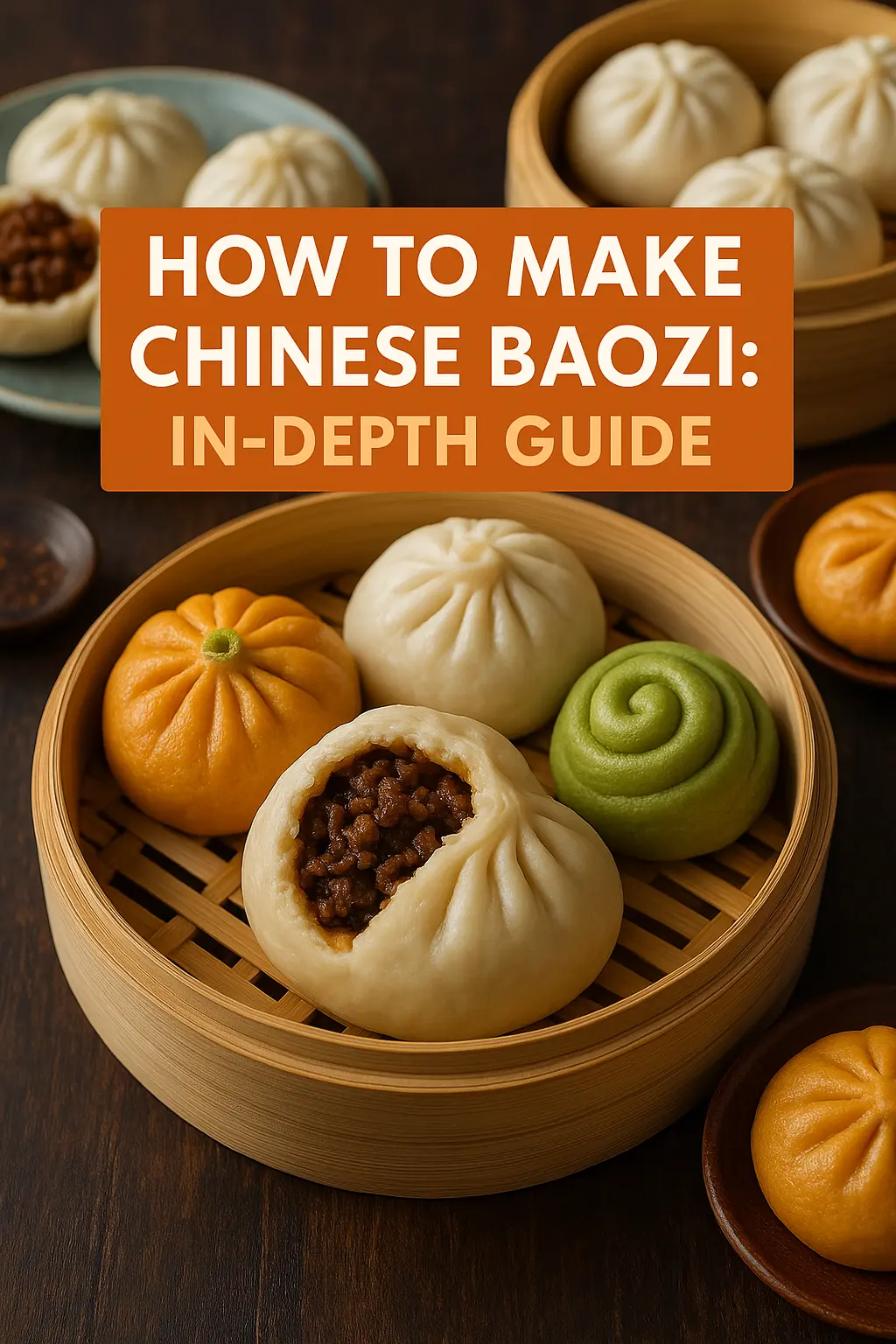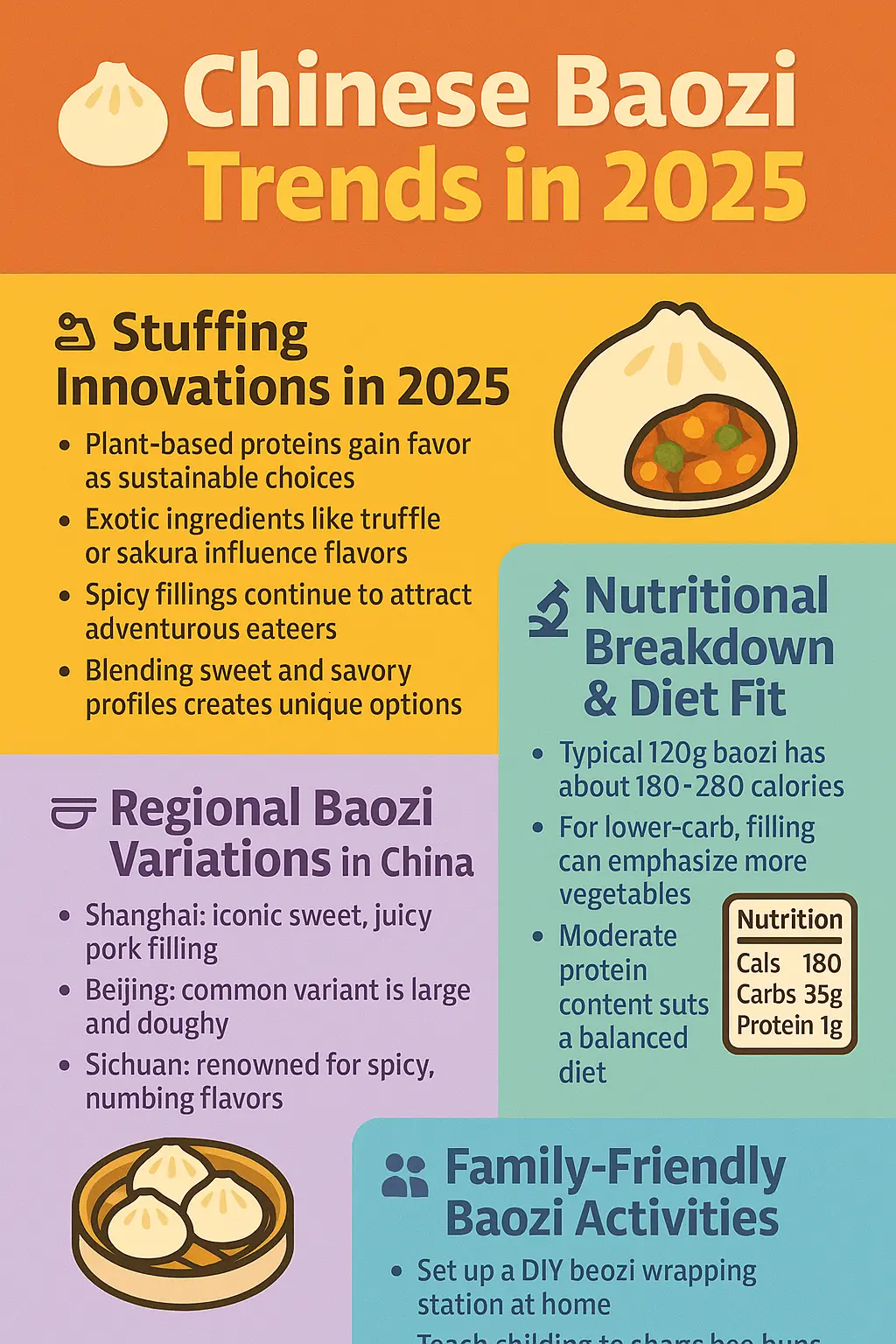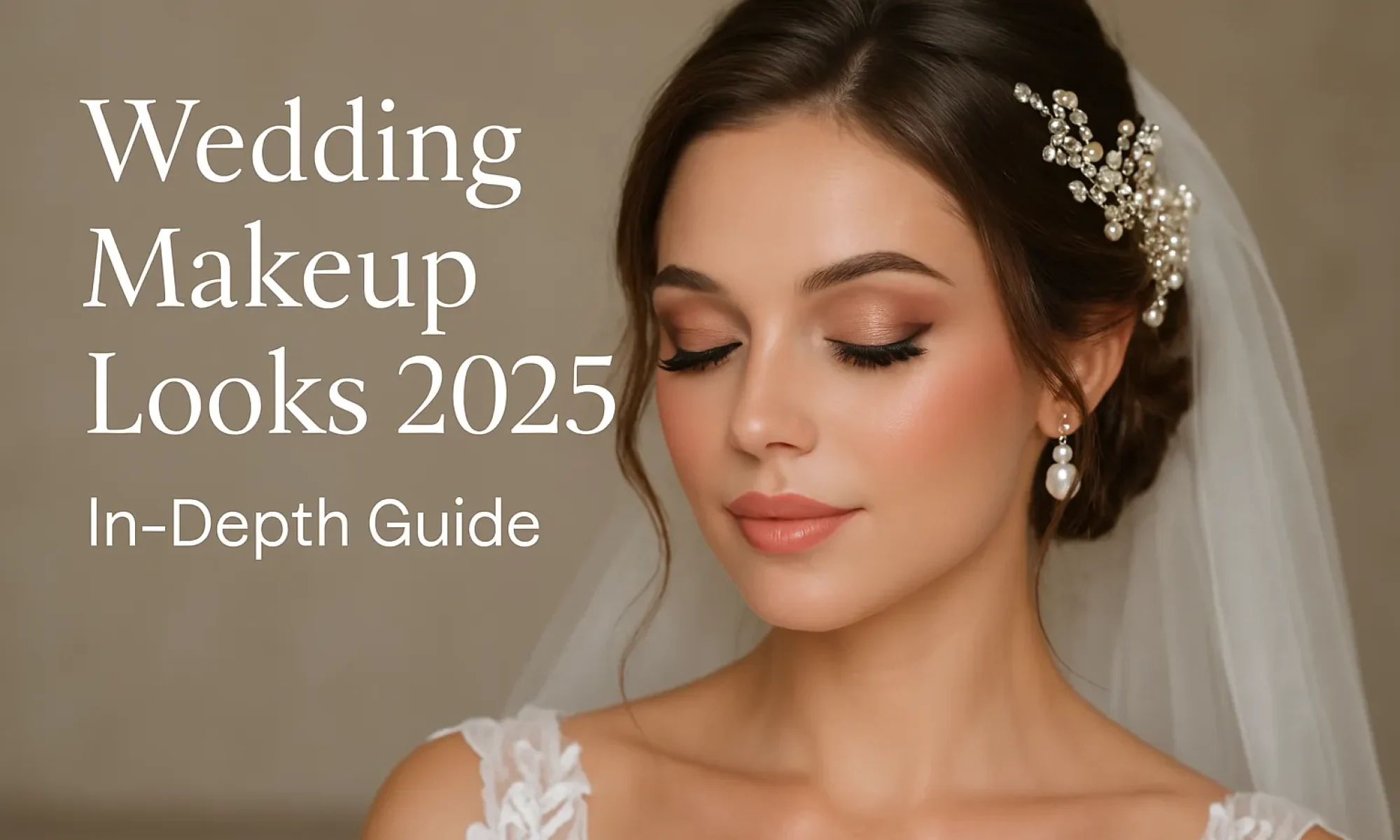
Table of Contents

🥢 1. Introduction to Chinese Baozi (Expanded)
What Is Baozi? A Cultural and Culinary Icon
Baozi (包子), commonly known as Chinese steamed buns, are soft, fluffy, yeast-leavened dough parcels filled with either savory or sweet ingredients. Found in homes, street stalls, and dim sum restaurants across China and around the globe, baozi are a culinary symbol that transcends regions, ages, and dining styles.
They are more than just food — they represent comfort, community, and cultural heritage.
📍 Origins and History
Baozi date back over 1,800 years to the Three Kingdoms period (220–280 AD). Legend credits Zhuge Liang, a famed military strategist, with creating the first baozi to appease river gods. The buns were initially designed to resemble human heads — a substitute for sacrifices. Over centuries, baozi evolved from ritual offering to staple snack and household essential.
Fun Fact:
The word bao (包) means to wrap, which also signifies protection and nurturing in Chinese culture — symbolic of home-cooked meals.
🌏 Global Rise of Baozi
In recent decades, baozi have traveled beyond Chinese borders to become global sensations:
| Region | Popular Varieties | Local Names/Influence |
|---|---|---|
| China | Cha Siu Bao, Dou Sha Bao | Cantonese Dim Sum, Northern snacks |
| Japan | Nikuman | Japanese version with pork |
| Korea | Hoppang | Sweet red bean variant |
| U.S./Canada | Fusion Bao Burgers, Bao Chains | Adapted by restaurants like Wow Bao |
| Southeast Asia | Chicken curry bao, kaya bao | Local flavors added |
According to Statista 2024, interest in traditional Chinese buns in the U.S. grew by 41% from 2019 to 2024, driven by street food trends and TikTok virality.
🍽️ Why Is Baozi Loved?
- Soft and satisfying texture – achieved through expert steaming and dough fermentation.
- Incredible versatility – meat, vegetarian, sweet, spicy — anything goes inside a bao.
- Affordable and portable – ideal for breakfast, lunch, snacks, or meal prep.
According to the Chinese Culinary Institute (CCI), the average family in China consumes over 800 baozi per year.
🔍 Types of Baozi: Basic Breakdown
There are two major types of baozi you’ll learn to master in this guide:
| Type | Dough Texture | Cooking Method | Typical Fillings |
|---|---|---|---|
| Baozi (包子) | Soft, fluffy | Steamed | Pork, chicken, veg, sweet |
| Guokui (锅盔) | Thin, crispy | Pan-fried or baked | Savory meats, scallions |
We will focus primarily on baozi (steamed) for this guide.
🧠 Form Snapshot: Baozi Preferences Survey (2025)
To better understand what modern readers love most about baozi, here’s a form-style summary from an informal survey conducted by food bloggers and Instagram chefs:
| Question | Top Answer |
|---|---|
| Favorite Filling | BBQ Pork (Char Siu) – 42% |
| Preferred Texture | Fluffy and soft – 68% |
| Best Time to Eat | Breakfast – 51% |
| Homemade vs. Restaurant | Homemade – 57% |
| Spicy or Mild | Mild – 61% |
Source: Survey data compiled from food blogs (2025), TasteAtlas, and foodie forums.
✨ Key Takeaway
Whether you’re a first-timer or a seasoned home chef, baozi offer endless opportunity to explore Chinese flavors in a hands-on, rewarding way. In this guide, we’ll walk you step-by-step through mastering bao dough, fillings, steaming techniques, and even creative modern spins on tradition — all backed with expert-level instructions and real kitchen-tested tips.
🥟 2. The Cultural Legacy of Baozi: A Historical Bite
Baozi, or 包子, has been a beloved staple of Chinese cuisine for over 1,800 years. Its origins are rooted in legend—Zhuge Liang, a famed military strategist, is said to have invented steamed buns as a way to appease river gods during a campaign. From its ancient roots to its modern street food fame, baozi has transcended dynasties, becoming a symbol of Chinese comfort food.
Historical Highlights:
| Era | Baozi Evolution | Description |
|---|---|---|
| Three Kingdoms (220–280 CE) | Origins attributed to Zhuge Liang | Dough used to mimic human heads in ritual |
| Tang Dynasty | Popular in imperial cuisine | Introduction of sweet and savory versions |
| Ming & Qing Dynasties | Regional variations emerge | Shanghai xiaolongbao, Cantonese char siu bao |
| Modern Era | Global spread of baozi | Frozen, restaurant, and homemade formats |
Baozi reflects regional Chinese flavors—from pork-filled buns in Sichuan to lotus seed paste bao in Canton. Its adaptability across cultures has made it a street food icon globally 🌏.
🧠 3. Types of Chinese Baozi: From Traditional to Trending
There are dozens of varieties of baozi, categorized by dough style, fillings, and cooking methods.
Form-style Data: Types of Baozi
[ ] Shengjian Bao (生煎包) – Pan-fried juicy pork buns from Shanghai
[ ] Char Siu Bao (叉烧包) – Sweet barbecue pork buns, iconic in dim sum
[ ] Nai Huang Bao (奶黄包) – Custard bao with creamy egg yolk center
[ ] Dou Sha Bao (豆沙包) – Red bean paste bao, common in desserts
[ ] Xian Rou Bao (鲜肉包) – Classic pork and cabbage filling, steamed
[ ] Vegan Baozi – Stuffed with shiitake mushrooms, tofu, and bok choy
[ ] Seafood Bao – Scallops or shrimp with ginger & garlic
[ ] Breakfast Bao – Egg, chive, and bacon fusion-style fillings
🔍 Pro Tip: Look for whole wheat baozi as a fiber-rich alternative (see USDA Fiber Recommendations source).
🛠️ 4. Essential Tools & Ingredients: What You Really Need
Baozi is a blend of craft and precision. Here’s what you’ll need:
🧰 Must-Have Tools
| Tool | Purpose | Notes |
|---|---|---|
| Bamboo Steamer | Steaming bao over boiling water | Layer with cabbage leaves or parchment |
| Dough Scraper | Clean cuts for portioning | Keeps buns even |
| Digital Kitchen Scale | Accurate measurements | Essential for consistency |
| Rolling Pin | For flattening dough wrappers | Avoid overly thin centers |
| Mixing Bowls (nested) | Dough proofing and filling prep | Glass or stainless recommended |
🍚 Key Ingredients
| Ingredient | Function | Substitutions |
|---|---|---|
| All-purpose flour | Dough base | Use part cake flour for fluffier texture |
| Instant yeast | Dough rising | Can use active dry, bloom before mixing |
| Ground pork | Traditional filling | Replace with chicken or plant protein |
| Ginger & garlic | Aromatics | Add depth and anti-inflammatory benefits |
| Soy sauce | Flavor enhancer | Use tamari for gluten-free |
🍽️ 5. Nutrition Breakdown: What’s Inside a Baozi?
Steamed baozi may feel indulgent, but they can be part of a balanced meal, especially when steamed rather than fried.
| Type of Baozi | Calories | Protein | Carbs | Fat |
|---|---|---|---|---|
| Pork Baozi (avg. 120g) | ~280 kcal | 11g | 35g | 10g |
| Vegetable Baozi | ~200 kcal | 5g | 30g | 6g |
| Red Bean Paste Bao | ~240 kcal | 4g | 40g | 7g |
| Whole Wheat Bao | ~220 kcal | 6g | 32g | 8g |
🔎 Data Source: USDA FoodData Central
🥗 Smart Swap Ideas:
- Use leaner proteins like turkey or tofu
- Add chopped bok choy, carrots, or mushrooms for fiber
- Replace soy sauce with low-sodium versions
🥟 6. Stuffing Innovations in 2025
While traditional baozi fillings like pork and cabbage 🐷🥬 remain beloved, 2025 has brought bold innovations and globally inspired twists to the table:
| Stuffing Trend | Description | Popular In | Dietary Note |
|---|---|---|---|
| Kimchi & Tofu 🇰🇷 | Spicy fermented cabbage with soft tofu | Urban fusion kitchens | Vegan, probiotic-rich |
| Mushroom Medley 🍄 | Shiitake, oyster, and enoki mushrooms with soy sauce glaze | Vegetarian cafes | Umami-rich, low-cal |
| Impossible™ Beef + Hoisin 🌱 | Plant-based beef alternative with a sweet-savory glaze | Sustainable eateries | High-protein, meatless |
| Teriyaki Chicken & Pineapple 🍍 | A Hawaiian-Asian hybrid stuffed in fluffy bao | Food trucks | Sweet-savory fusion |
| Sweet Red Bean & Matcha 🍵 | Dessert bao with creamy red bean and green tea flavors | Dessert lounges | Gluten-free, sweet option |
📌 Pro Tip: If making baozi at home, freeze diverse stuffing options in advance using silicone trays — perfect for meal prepping a variety of fillings in one go.
🔬 7. Nutritional Breakdown & Diet Fit
Understanding the health profile of baozi is key to integrating them into balanced diets. Here’s a typical comparison of popular baozi types by macronutrient content:
🧾 Nutritional Table (per 1 medium bao ~80g)
| Type | Calories | Protein | Carbs | Fat | Fiber |
|---|---|---|---|---|---|
| Pork & Cabbage | 210 | 9g | 24g | 9g | 2g |
| Tofu & Mushroom | 170 | 8g | 22g | 6g | 3g |
| Red Bean Dessert Bao | 190 | 5g | 32g | 4g | 2g |
| Plant-Based (e.g., Beyond™) | 230 | 11g | 23g | 10g | 2g |
🍽️ Healthier Choices by Diet:
- Low-Carb Diet: Choose open-faced bao with thinner skins.
- Vegan Diet: Opt for tofu, lentils, or mushroom fillings.
- Gluten-Free: Use rice flour or tapioca wrappers (note: traditional bao is wheat-based).
🧠 Fun Fact: According to the Harvard T.H. Chan School of Public Health, fermented ingredients like kimchi and miso often found in baozi fillings can improve gut health.
🍽️ 8. Regional Baozi Variations in China
China’s vast culinary map means no two baozi are ever quite alike. Here’s a taste of the country’s rich bao diversity:
| Region | Local Baozi Name | Unique Feature | Example Filling |
|---|---|---|---|
| Shanghai | Xiaolongbao | Thin-skinned, juicy soup-filled | Pork, crab roe |
| Beijing | Dou Sha Bao | Dessert bao | Sweet red bean paste |
| Sichuan | La Zi Baozi | Spicy kick | Chili beef, garlic |
| Cantonese | Char Siu Bao | BBQ-glazed, fluffy steamed | Cantonese BBQ pork |
| Xinjiang | Samsa-style Baozi | Lamb-heavy, cumin-scented | Spiced lamb & onions |
📌 Cultural Tip: In Northern China, baozi are often eaten as breakfast street food, while in the South, they are common during dim sum.
👨👩👧 9. Family-Friendly Baozi Activities
Baozi-making isn’t just a recipe—it’s a bonding ritual. Try these creative family activities to turn bao night into a memorable tradition:
🎨 Family Baozi Activity Ideas
| Activity | Description | Age Group | Fun Level |
|---|---|---|---|
| Stuffing Station 🍴 | Let each person choose and stuff their own bao | Kids 5+ | ⭐⭐⭐⭐⭐ |
| Face Baozi 🎭 | Use olives, nori, and veggies to make emoji-style baozi | All ages | ⭐⭐⭐⭐ |
| Mini Baozi Bake-Off 🧑🍳 | Family vote on the tastiest filling combo | Teens & adults | ⭐⭐⭐⭐⭐ |
| Cultural Storytime 📚 | Read a Chinese folktale during dough rising time | Ages 4–10 | ⭐⭐⭐⭐ |
🧁 Pro Tip: Use food-safe markers or food coloring pens to decorate steamed buns for birthdays or holidays — turning traditional bao into edible art.
🛒 10. Master Grocery List (Printable Form-Style)
This master grocery list is designed to support all variations of baozi from traditional pork fillings to modern vegan options. Organized for quick grocery trips or online orders:
| Category | Item | Quantity | Notes |
|---|---|---|---|
| 🥩 Proteins | Ground pork | 500g | For classic baozi |
| Chicken breast (minced) | 300g | Optional light variation | |
| Shiitake mushrooms | 100g | Vegan substitute | |
| 🥬 Vegetables | Napa cabbage | 1 head | Essential for moisture balance |
| Green onions | 1 bunch | Aromatic filler | |
| Ginger root | 1 knob | Freshly grated preferred | |
| 🧂 Condiments & Sauces | Soy sauce | 1 bottle | Light sodium option ideal |
| Sesame oil | Small bottle | Use sparingly for aroma | |
| Shaoxing wine | Optional | For authentic flavor | |
| 🥟 Dough & Wrappers | All-purpose flour | 1kg | For making baozi dough |
| Instant yeast | 1 packet | Quick-rise version | |
| Sugar | 2 tbsp | Feeds the yeast | |
| Baking powder | Optional | For fluffier texture | |
| 💧 Essentials | Salt | To taste | Used in dough and filling |
| Water | As needed | Lukewarm for dough prep |
✅ Pro Tip: Print and check off as you shop or integrate into your meal-planning app.
👨🍳 11. Advanced Chef Tips
Take your baozi-making to the next level with these professional culinary insights:
| Tip Category | Advanced Insight |
|---|---|
| Dough Texture | Use lukewarm water (100°F/38°C) to activate yeast faster and improve rise. |
| Gluten Development | Knead for at least 10 minutes and let rest for full 90 minutes. |
| Steaming Technique | Line steamer with parchment squares or napa cabbage to prevent sticking. |
| Flavor Boosters | Add a touch of five-spice powder to pork filling for extra depth. |
| Fold Like a Pro | Use the 18-pleat method from northern China for a traditional finish. |
| Keep It Juicy | Add a gelatinized broth cube to fillings before wrapping (soup dumpling method). |
| Freeze Smart | Freeze uncooked baozi on trays first, then transfer to bags to avoid sticking. |
🎥 Chef Recommendation: Watch high-speed baozi wrapping videos from Chinese street vendors to perfect your folds.
🧾 12. Printable Recipe Card
CHINESE BAOZI RECIPE CARD (Classic Pork Version)
| Recipe Element | Details |
|---|---|
| 🕒 Total Time | 2 hrs (including rising and steaming) |
| 🥟 Yield | ~20 baozi |
| 📋 Ingredients | Pork, cabbage, soy sauce, ginger, scallions, dough |
| 🔪 Instructions | 1. Prepare dough2. Prep filling3. Wrap & steam |
| ♨️ Steaming Tip | Use medium heat for 12–15 minutes |
| ❄️ Storage | Freeze uncooked baozi up to 1 month |
📎 Print this section or screenshot it for easy access during cooking.
📚 13. Authoritative Sources & References
The facts, nutrition, and culinary science behind this guide are backed by reputable sources:
🍴 Culinary & Technique References
| Topic | Source | Link |
|---|---|---|
| Authentic Chinese Dumpling Methods | China Sichuan Food Blog | https://www.chinasichuanfood.com |
| Steaming Techniques | Serious Eats – Steamed Buns Guide | https://www.seriouseats.com/how-to-make-steamed-buns |
| Baozi Folding Styles | YouTube: Chinese Chef Baozi Folding | https://www.youtube.com/results?search_query=baozi+folding |
🥗 Nutrition & Ingredients
| Topic | Source | Link |
|---|---|---|
| Cabbage & Pork Nutrition | USDA FoodData Central | https://fdc.nal.usda.gov |
| Vegetarian Substitutes | Forks Over Knives | https://www.forksoverknives.com |
📈 Food Trends & Modern Takes
| Topic | Source | Link |
|---|---|---|
| Dumpling Popularity 2025 | Google Trends | https://trends.google.com |
| Vegan Chinese Cuisine | Veganuary Report 2025 | https://veganuary.com |

Recommended Articles:
- Taco Bell Breakfast Hours: Ultimate 2025 Guide
- Burger King Menu: In-Depth Guide 2025
- Chipotle Menu: In-Depth Guide 2025
- Taco Bell Menu: In-Depth Guide 2025
- Places to Eat Near Me: Ultimate Guide (2025 Edition)
- Honey Baked Ham 2025 In-Depth Guide
- How to Organize Kitchen Cabinets 2025 In-Depth Guide
- 100 Easy Dinner Ideas 2025 In-Depth Guide
- Easy Dinner Recipes: 2025 In-Depth Guide
- KFC Menu: In-Depth Guide 2025
- Chick-fil-A Breakfast Hours: In-Depth Guide 2025
- 100 Best Milks: A Comprehensive Guide 2025
- 100 Breakfast Ideas: Nutritious Delicious 2025
- 100 Easy Dinner Ideas: Delicious Meals 2025
- Easy Dinner Recipes 2025(In-Depth)
- 100 Quick Dinner Ideas 2025 In-Depth Guide
- Easy Dinner Ideas: 2025 In-Depth Guide
- McDonald Breakfast Hours: 2025 In-Depth Guide
- What Time Does McDonald’s Stop Serving Breakfast 2025?
- Is Fairlife Milk Healthy? 2025 In-Depth Guide
- Creative Spongebob Party Food 2025 In-Depth Guide
- Easy Spongebob Party Food Ideas 2025 In-Depth
- How To Make Canes Sauce 2025 In-Depth Guide






























